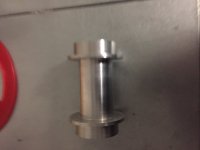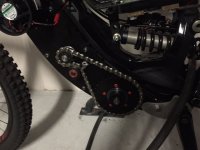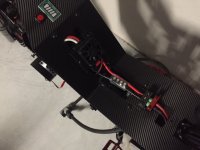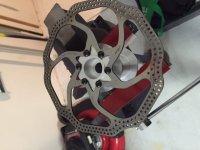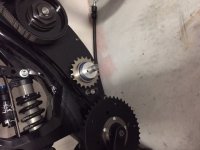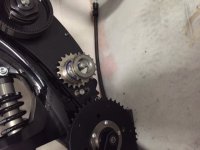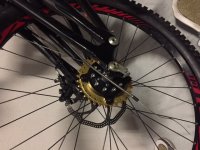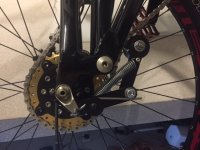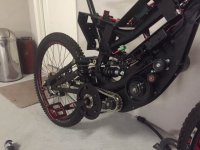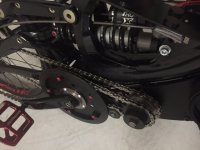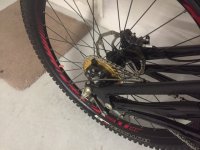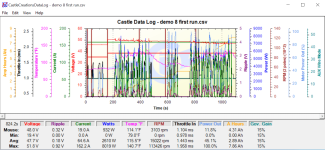thanks matt for clearing up about the fuse and the throttle. I still find all the electronic side confusing as if the controller is rated to 160 amps, how can the controller last if the FETs see burst of 200 amps and 400amps! isnt anything over 160amps going to kill the ESC or is the 160 just the input max amps from the battery.
also i am being sent a new battery from hobby king under warranty and i sent the controller of to Castle today for repair, so i should be able to try again in about a month once i get the controller again.
i also sent a Email to castle about what happened and after many emails from Bernie Wolfard from castle he reckons that voltage ripple killed the ESC even though i have extra Caps, but he also told me that inadequate batteries are the biggest killer of ESC and caps are only cheap insurance for failing batteries? But if it is inadequate batteries doesn't that mean that you where right Matt? as in the battery failed. and all you guys seem to be running extra caps with great success.
also once i get it back i am reluctant to try it again with the same set up as i dont want to have another failure straight away, i know i am pushing it to run it thru the gears but can someone check if i have worked this out correct.
this is the current set up,
astro 4T max rpm 8100 and 5.2nm of torque
1st reduction 4:1 (2028rpm and 20.8nm)
2nd reduction 4.8:1 (422rpm and 99.8nm)
3rd reduction to crank 2.75:1 ( 153rpm and 275nm! )
then to 26" wheel
could this be to much reduction and torque? ( i know you guys have told me this already, but isnt this what motomoto's i think his name was roughly did?)
next two ideas straight from freewheel to back 26in wheel so bypassing the crank reduction
1st idea is to run chain straight from BMX freewheel to rear wheel so it would be 1st and second stay the same 422rpm 99.8nm only two reductions
2nd idea 1st reduction 4:1 but change second reduction to 2.4:1 making it 845rpm 50nm at freewheel then chain to rear wheel
would the above two be easier on the controller being more rpm but less torque? that is if i have worked it out right.
sorry for all the questions but just trying to get it right for round two.
also copy of last email from castle creations below
Daniel,
You cannot have too much capacitance on the input leads as long as they are ultra-low ESC aluminum electrolytics. Other types of Ultra-Low ESR caps will work with tantalums seeming the obvious choice. However, the owner of Castle Creations started designing real aviation electronics where tantalums are banned because if they get overloaded they explode which is not an acceptable failure state in an airplane carrying people. The best would be ultra-low ESR ceramic caps but these are simply too expensive for production work.
The gotcha here is you cannot depend on capacitance to make up for inadequate batteries. The reason we sell cap packs is for cheap insurance against a failing batteries increase in internal resistance which lower the discharge rate increasing ripple until the battery is taken out of service. Because most electric systems in RC are so overpowered it can be hard to detect when the battery is wearing out by performance. Checking ripple is a way to catch and retire batteries before they get to this state and higher end charges which measure internal resistance in each cell and the whole of the pack are also good tools for determining when it is time to retire a battery pack.
The reality is it takes very little power to maintain a steady speed in a bicycle unless the speed is high enough that wind resistance starts playing a major role in how much energy it takes to maintain the speed. This starts around 35 mph and because wind resistance goes by the square root of its velocity the amount of energy it takes over 35 goes up very quickly. However, pedal powered bike seldom go over 35 and don’t maintain that speed for any length of time. If the goal is to maintain speed over 35 mph in a bicycle it is better to change to a motorcycle type setup as these have much stronger frames that can carry heavier batteries and withstand the enormous torque of an electric motor. A bicycle is a bike and trying to make it a motorcycle is not sustainable. All equipment needs to be used within its limitations. And as I am sure you are aware, a pedal powered bicycle is the most efficient form of transportation ever invented.
As a quick note, a batteries discharge rate is determined by its internal resistance. The lower the resistance the higher the c rating. Resistance on the battery side of the circuit is what creates ripple. For this reason the minimum c rating we recommend is 30c, lower than that will cause ripple regardless or battery size. Currently, only high discharge lipo batteries are capable of sustained 30c or higher. A good source for high c rated batteries at a good price is http://dinogylipos.com/. Nic Case used these to set the current RC land speed record of 202 mph!
-----------
Bernie Wolfard
Castle Creations
540 N Rogers Rd.
Olathe, KS 66062
913-390-6939 ext. 123


